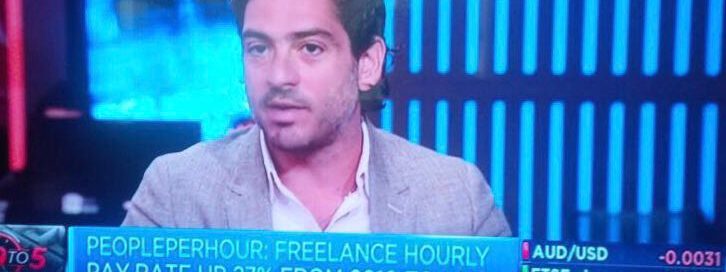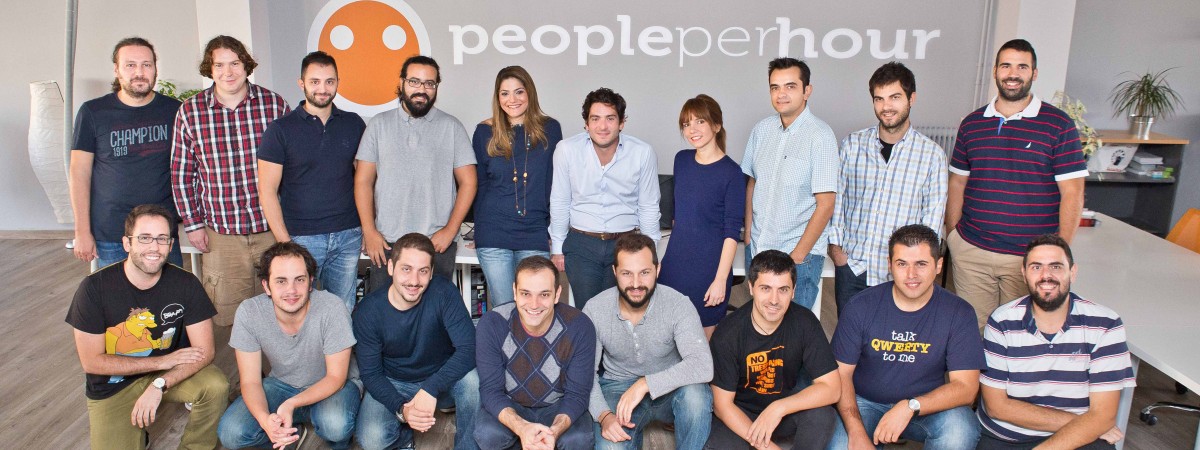Marketplaces are notoriously hard to get going because of the chicken-and-egg problem at the start. You need supply in order to get demand and you need demand in order to get supply. In most the money comes in through the demand side of the equation and thus are considered to be demand-led. However, I would argue that in embarking on setting up a marketplace business one can be more rigorous in their analysis on the supply side.
These are the factors I would consider if I were to set up another marketplace business (or invest in one):
1. Arcane Supply
My first company was a business called Arcarnus which promised to broker the world’s ‘arcane’ places and services – secret gems as it were- to a discerning people.
That business didn’t do very well when it came to scaling but the notion of the ‘arcane’ was certainly carried forward to my next (and current) business PeoplePerHour.com and is without a doubt a big reason for its success.
Amassing inventory – of whatever kind – that has an element of exclusivity or scarcity is key to getting initial traction. It’s not always a must, but if your inventory is too easily discoverable elsewhere it will be harder, and although not impossible (as Amazon has proven) you need to innovate in different ways like price, the speed of delivery or simply having a huge breadth to become a ‘one stop shop’ destination. Whilst doable that’s without a shadow of a doubt a much more expensive endeavour.
2. Homeless supply
Arcane or not, my next question would be “is that inventory looking for a new home?”. Some things – like second-hand collectables, much to eBay’s delight, were craving to migrate from the street fair to the world wide web. Others like grandma’s hand-knit woollen cardigan also did, finding a home on Etsy.com.
Here too, timing is everything. A category seeks a new home when a) there’s enough inventory within it and b) when their current home gets crowded. If you’re selling hand-crafted inflated Baboons who pop a caramel-infused marshmallow out of their backside every time you squeeze them (now why didn’t I think of that idea before!) and you can only make a handful a day, you may find that walking up the street is all you need to sell them all. Why pay a marketplace a % of that? But if you find that your whole neighbourhood or town rip off your baboon-trade, then you may well need a bigger home for your boons.
3. Ripe for storytelling
Given an infinite amount of dollars, any business can turn into a success (even my fabulous baboon idea above). But given finite dollars, having scarce supply, that’s ripe for a new home, and, a story that others are willing to share, will almost certainly act as viral agents and catalyst for distribution and growth.
In the end, people don’t relate to facts and figures, or shapes or forms, or tastes for that matter, as much as they relate to ‘storytelling’. Even the sensation of taste is instantly followed by a story, and it goes like this “Yumm…” You instantly can’t wait to share the delight with others!
Everything that precedes it, therefore, is a means to an end. What propagates are not the facts, the smell, the taste, the form or the function. It’s the story they inspire.
Every great company has at some point planted storytelling in their customers’ mouths one way or another. For Uber it was something like ‘look at me and my own personal chauffeur aren’t I cool’ … for Airbnb, it’s the personal experience of staying in someone’s own home, and the things that hooked you. In my last stay, it was the host’s sound system and how he came over to personally show me how to hook my iPhone to it.
With PeoplePerHour, the story we hear again and again is how someone built their entire business through PeoplePerHour.com. Often while residing on some beautiful resort on the beach!
4. A friendly Macro
Sadly, success and effort are not symmetrical. If Newton’s 3rd Law of motion was translated into the world of business dynamics it would be this: “for every micro, there is an equal and opposite macro”
In other words, for every one thing, you get right internally there is some external force that opposes that success and acts as ‘friction’ point (no wonder we borrow terms from physics in marketplace lingo).
Macro is your tailwind. You need it acting in your favour otherwise, it will be much harder – if at all possible – to get there, at least without running out of fuel!
Is onboarding of the supply you are amassing helped by some macro forces?
Again, in our case, that was clearly the case. Be it out of ‘need’ (e.g., rising unemployment during the recession forcing people to seek alternative sources of income) or by choice underpinned by socio-economic drivers, such as work-life balance, freedom and the aspiration to be your own boss, it remained unquestionable throughout our journey that people’s yearning for independence was no short-term fad.
Similarly for other categories: travel’s tailwind is the long-term declining cost of travelling; the health food’s sector is people’s ever-increasing health consciousness (or paranoia of premature death), renewable energy is buoyed by people’s delusion that we are running out of energy sources (when in fact, it’s outstripping consumption) and hypocritical rhetoric on saving the planet when they destroy it in equally or more ways than the rest of us; and so on.
Delusional or not, having a friendly macro helps!
4. The 10x factor
Peter Thiel argued in his book ‘Zero to One’ that for a start-up to be a big success it needs to be 10x better than that of the incumbents. In marketplaces, businesses that criterion is almost always a supply-side criterion.
The Uber experience is certainly 10x better than waiting in the rain to hail a cab which will – in most cities – also be more expensive, a lesser quality car and a driver who may have just got off the wrong side of the bed that morning, or had an argument with his wife and doesn’t give a sh*t, is rude and scares the crap out of you because he’s behind the steering wheel and you’re inside locked doors with what looks and moves like a loony on steroids.
On Airbnb, you will find amazing homes to stay in which are (for a certain category of people at least) 10x better than hotels in terms of cost (per square foot at least) and the homeliness factor.
PeoplePerHour grew very quickly when we started because getting a logo or any piece of work done on the site was – and still is – 10x cheaper than the old-fashioned way (say going to an agency or hiring someone in-house).
5. Platform stickiness
Platform stickiness comes from both sides, albeit in different ways. However, more often than not, a marketplace is not just an exchange mechanism but also a suite of tools for the supply side to build up a regular source of income. It’s more than a one-off ‘hit’ or strike of good luck for the Sellers.
Tools, such as the ability to get paid fast, securely and seamlessly, exchange files, communicate in real time, integrate with your calendar, trusted reputation systems, and a raft of other admin tools like collating all your invoices in one place, perhaps even integrating with your accounting software – not to mention getting customers in the first place – are invaluable tools for Sellers that would otherwise be a nightmare to put together individually themselves. And very expensive!
A newer breed of marketplaces, which I am a big believer in, takes that one step further and builds deep workflows tailored exactly to the vertical they are serving. They essentially become mini ‘ERP’ systems for micro-businesses who don’t have the scale to do that themselves and overlay the transaction on top. Newer business models are arising to support these, often licensing the software hosted in the cloud (SAAS) and in other cases, a dual model where they charge in part for the transaction or in part for the software. Wahanda (now Treatwell) is one such example in the UK, as is Zocdoc.
These are powerful marketplaces as they can migrate upscale to serve larger enterprises once they prove the model for SMEs by tailoring their software and workflow to serve larger organisations. This is a big part of our strategy in the next 1-2 years at PeoplePerHour.com as well.
6. Network effect
Once you crack the chicken-and-egg problem and get going, marketplaces turn the corner and become both highly scalable and defensible businesses. That’s because ‘network effects’ kick in.
Simplistically, network effects means that the value in a marketplace is a function of how many participants are in the marketplace. So every new user you get makes the entire marketplace more valuable, for other buyers and sellers alike.
Sounds obvious. But what’s not obvious is how to get that flywheel going. In practice, it comes down to understanding why Sellers on your platform could benefit not just from getting Buyers (and hence sales) but from other sellers. Often it’s to do with complementarity. They can find other products or services that strengthen their selling power. This then gives them an incentive to promote your site and bring others in their network to the site so as to collaborate. Hence, network effect.
In certain marketplaces, this happens de facto in an unstructured way. On Etsy.com example, many Sellers turn to Buyers and then resellers of the things they bought. On PeoplePerHour.com we see the same dynamic: a graphic designer may need to work with a Videographer for a project they are doing for a client. Or a voice-over artist or copywriter.
Other marketplaces do this in a more structured way or design in their DNA from the start which has considerable advantages. For example, if you are building a marketplace for lawyers, and say you know they work with paralegals, you design the flows such that when a lawyer creates her profile she can then invite her paralegals – or other lawyers they collaborate with for that matter – and integrate all of that into their profile. To encourage that behaviour one could allow discovery of lawyers based on the size of their team, or feed that into their reputation system. These type of marketplaces can get exponential growth as each participant will be inclined to bring numerous more with them (their network), which in turn will make it more attractive for Buyers and build critical mass faster.
Epilogue
Very few successful marketplaces are built by design. Most just happen. Most even happen despite bad design, not because of it. There are so many variables needed for success that probability overtakes calculus. Which is why VCs take 10 bets for 1 to succeed. Given how many businesses they see (and a biased sample set at that skewed towards the best of the crop), if there was a predictive formula for success surely they would apply it and have 100% hit rate?
That said, one can conduct a rigorous analysis, especially – as I argue above – on the supply side, to consider whether the marketplace they are about to create has the necessary qualifying criteria for success. ‘Qualifying’ is the operative word here. Meaning: if you do tick the above boxes, you’re off to a good start. But it’s certainly not the end and definitely not a foregone conclusion.


















